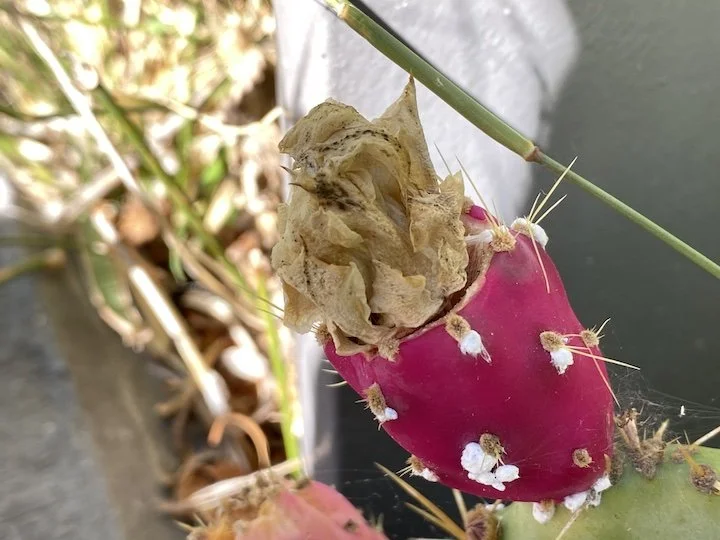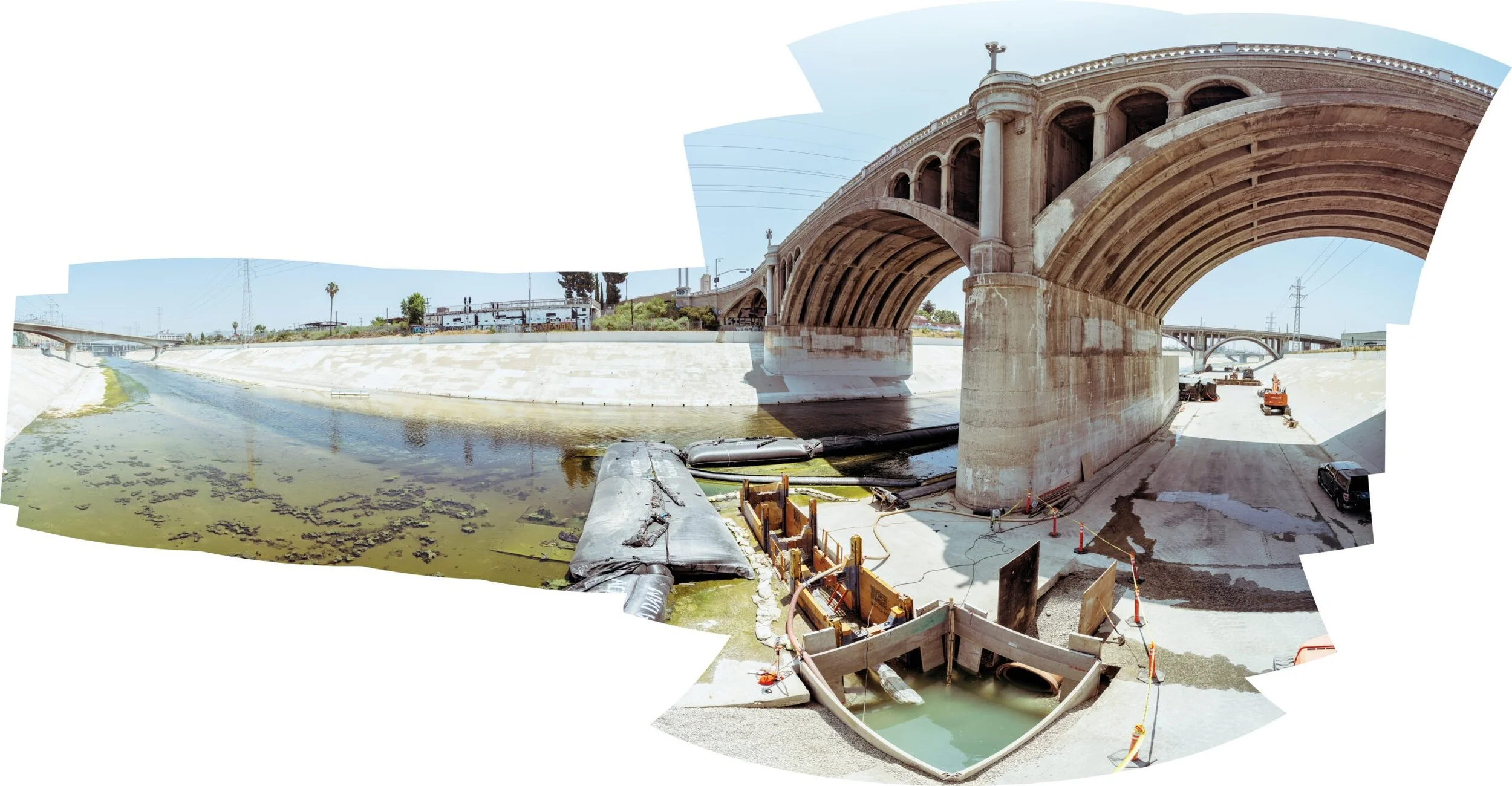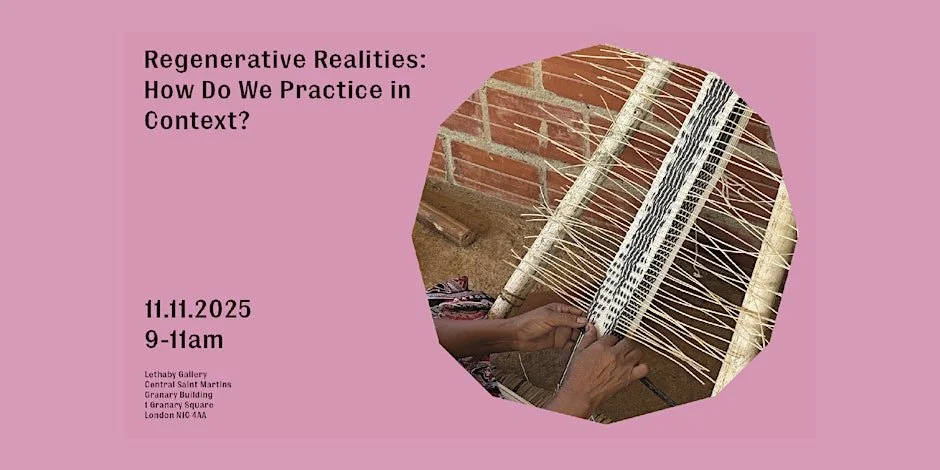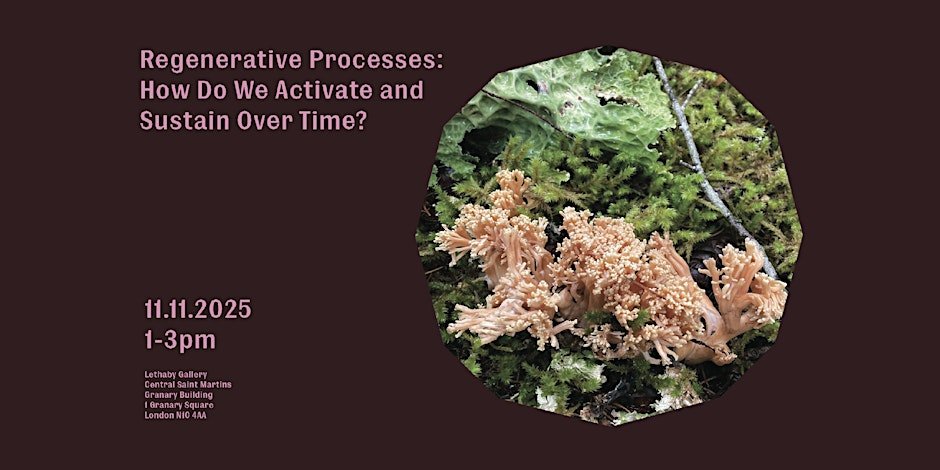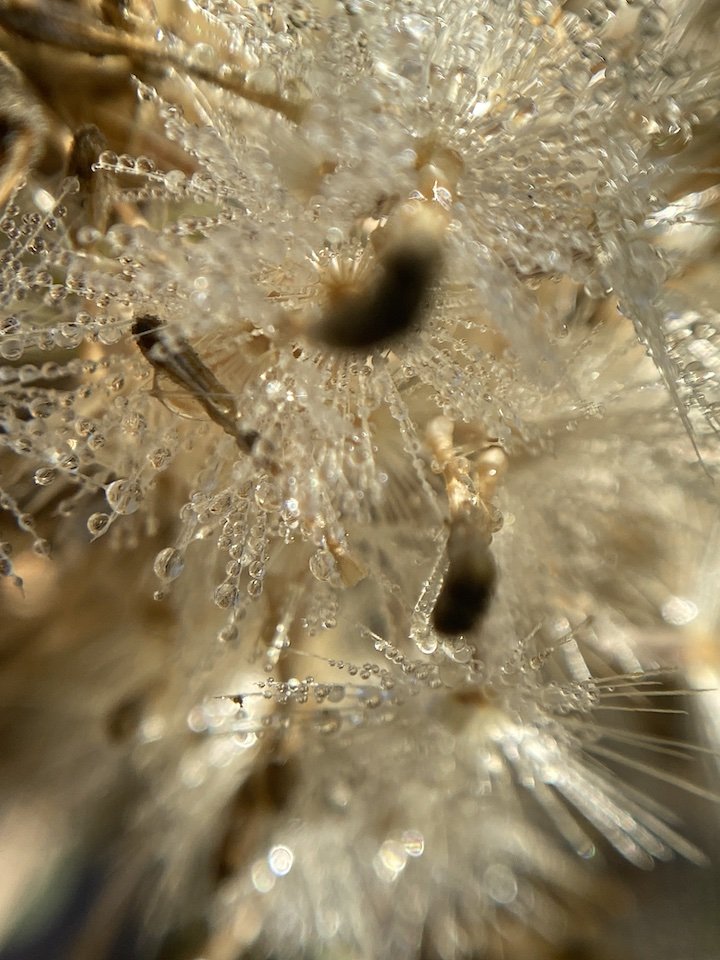Can We Think Like Water?
This speculative research-in-progress explores the Ballona Watershed in Los Angeles and asks whether we can learn to think like water: flowing, patient, resilient. Can regenerative design principles co-create conditions for greater flourishing of the more-than-human within the watershed? Can they encourage within us a fluid practice of engagement, caretaking, and reciprocity?
Los Angeles is a land of ecological extremes, a land- and waterscape so prone to flooding the Tongva name for the watershed translates as "it is full of water," yet which now experiences extreme drought, pipes in water from the Owens Valley (think Chinatown), and suffers from recurring and catastrophic wildfires. Yet our natural water source has to be concreted to avoid equally catastrophic flooding.
Can We Think Like Water? is an ongoing exploration into our urban and ecological futures that combines photography, film, archival material and historical maps, and field notes to share stories of place and examine contemporary system-scale interventions. The project imagines water and its watersheds as epistemic, inviting us to think fluidly and conceptually.
How could we co-create conditions for greater flourishing of the more-than-human within the Ballona Watershed?
Apply social practice, craft, and systems thinking to support the watershed’s ongoing adaptation to changing conditions.
Engage in mapping exercises to support the academic, creative, and community-led projects that work to revitalize the watershed.
Can we create a gathering of scientists, artists, practitioners, community members, and civic officials to imagine otherwise, to practice collaboratively on the health of our entire watery ecosystem: waters, air, soils, fish, birds, insects, and ourselves?
Share our hopes, findings, and actions.
A meditation on the Ballona Watershed, featuring our favorite more-than-human companion.
meanderings
During field trips conducted October 2025 I observed Ballona Creek in Culver City (top row), the LA River upstream at Taylor Yard Bridge in Elysian Valley and Glendale Narrows (bottom row, left), and the Ballona Wetlands downstream in Playa del Rey (bottom row, right), all part of the larger Ballona Watershed which covers approximately 130 square miles from the Santa Monica mountains on the north to the Baldwin Hills on the south, and from the Harbor Freeway (110) on the east to eastern edge of Santa Monica.
The Los Angeles River loses more elevation in its 51 mile journey from its headwaters to the Pacific Ocean than the Mississippi River does along its entire length.
The Ballona Watershed gathers its waters from coastal mountain snowmelt, urban runoff, and groundwater – as evidenced in the images from Taylor Yard Bridge, part of an 11-mile stretch with a stone, not concrete, bottom, allowing plant life to emerge.
Today, the Ballona Creek section is a nine-mile-long flood control channel. No fish live in its waters, and it supports very little plant life. The concrete acts as a signal, a feature that co-creates impact up and downstream, both obstructing and revealing the water’s native ecological systems.
introduced plant life
Observations from a field walk in Ballona Creek, October 5, 2025
On the left is a Castor seed pod from a shrub native to North Africa, introduced to the Americas during the Trans-Atlantic slave trade. Castor oil is commonly used for medicinal purposes (note: the seeds contain ricin, a highly toxic substance that is lethal to humans and animals). On the right is Fountain Grass, also introduced to the bioregion, originally from Northern Africa or Australia. Both are hardy perennials and are quick to find niches for survival.
changing mindsets
How could design effect behavior change? Painting reminders on storm drains reminds us of the underground systems that transport urban runoff (e.g., oil, trash) to our oceans. Direct community engagement in clean up weekends, maintaining adjacent bicycle trails, and re-landscaping pathways evidence forms of care that encourage greater public use, safer space, and more free opportunities for recreation.
How could we rethink resilience? This plant thrives in an entombed environment, resilient, stubborn, a living agent of resistance. This is ecological agency, where seed and root seek out cracks in the system, sending down roots that work to regenerate soil and engage in nutrient exchange. Both the river and the plant have become marginalized within their own natural habitats. The cochineal insect lives on nopal, prickly pear cactus. Highly prized as a source of deep red (carmine) dye and driving the frenzy of imperialist-colonial trade, the plant and the insect grow wild in the harsh conditions along our river bed.
rethinking our relationship to water
Across sculpture (art-as-research), civic planning exercises, and public space, designers are making invisible water systems visible again—and challenging us to live differently with them.
An infrastructural art project by Lauren Bon and Metabolic Studio, Bending the River redirects a portion of the L.A. River beneath downtown into a purification system and biowetland. The cleansed water irrigates urban green spaces—reclaiming floodplain ecology and reimagining water as a shared civic resource.
The LA River Integrated Design Lab will build capacity to design the LA River channel and similar “landscape infrastructure” through the close cooperation of engineering, landscape architecture, and communities. It will do so by creating a river design interface that bridges between the practices of community design, landscape architecture, and hydraulic engineering to suggest new vetted designs for the LA River channel. The ultimate goal is to protype design processes for landscape infrastructure that are at once imaginative, inclusive, and technically informed.
Water, water management, and climate change accelerated urban flooding are of paramount importance to residents and decision makers in Southern California. The Oberlander Prize Forum IV conference, organized by The Cultural Landscape Foundation (TCLF) in partnership with the University of Southern California (USC) and the SWA Group on Friday December 5, 2025, will focus on landscape architecture’s leadership role in addressing critical urban flooding and water management.
histories
The County of Los Angeles began straightening the LA River and Ballona Creek around 1920 in order to protect the city from potentially devastating flood damage. During the 1930s, the Army Corps of Engineers carved it into a large channel and lined all but its last couple of miles with concrete. An extensive system of drains, mostly underground, was built to funnel storm water into the creek. The transformation of the creek from a natural waterway into a massive storm drain has broken a link in the ecological chain and severed the connection between the community and the land on which it resides. (https://ballonacreek.org/about-the-creek/)
Images top row right: Construction of the LA Riverbed and an early model, designed to assess flood risk. Both courtesy of USC Dornsife. Bottom row: Current flood control model, October 19, 2025 courtesy of the author; historical map of Ballona Creek, courtesy of The Huntington Museum, Pasadena.
regenerative realities
Judith van den Boom and Jessica Riquetti will be hosting Regenerative Realities, a hybrid session on 11 November 2025 at Central Saint Martins.
Regenerative realities are rooted in holistic practice, an approach that weaves together diverse knowledge, perspectives, and relationships in place. This means that when we practice in place, we look beyond isolated solutions and work the richness and voices in place.
In the morning session we explore regeneration as a place-based and relational practice, rooted in diverse ecosystems and knowledge together with with Jessica Riquetti (CAN), Prof. Carole Collet (UK), and Jane Brady (UK) sharing their work. In the afternoon, we turn our attention to how regenerative practices unfold over time. What does it mean to design with a system that is alive and constantly evolving?
Links to water, water-y aesthetic projects and research
The Mycelium by Tijn Tjoelker, Watersheds of Caring
Mathur/Da Cunha, Oceans of Wetness
Theory of Water by Leanne Betasamosake Simpson
Waves Lost at Sea by Cooking Sections
Ballona Watershed
Ballona Creek Renaissance community organization
Friends of Ballona Wetlands community clean-up









